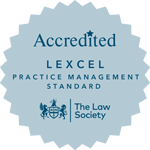Last Updated on 5th March 2025
Pro Neg solicitor, Emma Slade, reviews limitation in professional negligence actions and the difficulties that can arise in identifying the key dates.
For a free consultation about suing a solicitor for missing a limitation date contact us by phone or email.
One of the most common types of professional negligence claim against a solicitor is where a limitation date has been missed. The Limitation Act 1980 sets out what the relevant limitation periods are and for negligence claims, there is a strict six year time limit from the date of the act of negligence (or three years from date of knowledge) in which to bring a claim. However, while this might seem simple enough, identifying the exact date that the negligence occurred isn’t always straightforward.
The case of Lane –v- Cullen Solicitors illustrates the problems that can arise in determining the key dates that determine the issue of limitation.
In this case, Mrs Eason died in 1997. She had made a Will in 1993 but it was subsequently found to be invalid and so she was considered to have died intestate. As a result, her estate was to be divided between her two brothers – John and Frederick Lane – and the two children of her late sister – Paul Hobson and Ann Hannah.
In 1998, Mrs Hannah commenced a claim against the estate, arguing that she had a right to the whole of the estate. Unfortunately, her Legal Aid was revoked in 1999 and so she was unable to continue with the claim. However, it was clear that John Lane, who had been appointed the Administrator of his sister’s estate, was aware that Mrs Hannah felt she had a greater interest in the estate.
By 2001, John Lane had finalised the administration of the estate and distributed it amongst the beneficiaries. Not long later, Mrs Hannah issued court proceedings again, claiming the entirety of the estate. In 2002, the Court ordered that she was in fact entitled to the whole estate and ordered John and Frederick Lane repay the legacies they had received the year before. Frederick failed to pay up and in 2005, the Court ordered that as Administrator, John was fully liable. John issued court proceedings himself against the solicitors who had been assisting him with the administration of the estate for professional negligence. This raised the issue of limitation.
John’s argument was that, although he had been aware of Mrs Hannah’s potential claim, it wasn’t until 2002 when the Court ordered that the estate belonged to her, that her loss actually crystallised. Until then, it had only been a mere possibility and so the correct date for limitation purposes was 2002. John therefore said that he was within time for making his claim.
His former solicitors countered that 2002 was the wrong date for calculating limitation. They successfully argued that the correct date was 2001. Prior to the distribution of the estate, John had sufficient monies to pay out any potential claims. It was only after he paid out, that his position was altered. In short, the solicitors should have warned him of the possibility that Mrs Hannah could still bring a claim and he should get formal confirmation from her that she did not intend to pursue the claim. As such, John had to pay up his brother’s share and because he was time barred, could not recover compensation from his clearly negligent solicitors.
It seems like a harsh decision for John but it is a salutary lesson on how difficult it can be to identify the relevant key dates when calculating limitation.
If you have been the victim of a missed limitation date or a missed court deadline and would like to bring a claim for compensation on a No Win – No Fee basis, then call our FREE helpline today on 0333 888 0403 or send us an email with details of your case.


